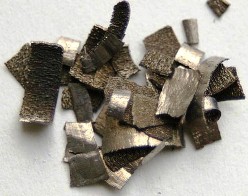
A BGS report on Rare Earth Element abundances has concluded that a combination of limited reserves and increasing demand from new technologies is likely to bring shortages of substances such as neodymium by 2014. Sue Bowler reports
Geoscientist Online Thursday 12 August 2010
Rare Earth Elements (REEs) are not in fact rare; they are associated with carbonatites and alkaline igneous rocks and in iron-oxide-copper-gold deposits, and in hydrothermal deposits, as well as in a variety of placers and residual deposits from weathering of ancient primary sources. The BGS report addresses supply and demand for both Light and Heavy REEs and finds that current industry and trade patterns suggest no problems for the LREEs. For the HREEs the report predicts that, by 2014, demand will outpace supply for europium, terbium and dysprosium, and that there will not be enough neodymium to match demand.
REEs are now particularly in demand for batteries, magnets and catalysis, with increasing applications in energy efficiency. Neodymium is especially in demand, for rechargeable batteries, powerful magnets used in hybrid cars and wind turbines and, because they can be small and powerful, in consumer goods such as headphones. The report also addresses growing new uses of these elements, including rechargeable batteries, superalloys for use in extreme conditions and hydrogen storage, which will compound problems. In addition, for many of these technologies there are few substitutes for the REEs used.
Security of supply is another concern highlighted by the BGS report. Overall, the largest reserves are in China (36% of world reserves by weight), with the Commonwealth of Independent States (19%) and the US (13%) second and third. The UK has deposits associated with alkaline igneous intrusions and tertiary granites, but the nodular monzanite found in Wales and SW England is the most significant. While REEs are found worldwide, the main source for the HREEs likely to be in short supply are ion adsorption clay deposits in southern China. China has been reducing its exports in recent years, in order to meet domestic demand. While China may move into producing and exporting finished goods rather than the REE raw materials, countries wanting security of supply are exploring for further deposits.